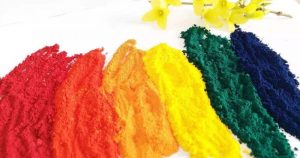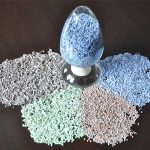Color mixing basics – basic lacquer and color paste
I. Basic paint
The so-called basic paint, in simple terms, is the white paint or varnish produced by the paint company itself (does not contain the pigment of covering power). The base paint is the carrier of color mixing, and the control of base paint in the process of color mixing will affect the accuracy, reproducibility, compatibility, economy and color gamut coverage of all aspects. At the same time, the base paint is the only part of the integrated color mixing system prepared by the paint company itself, so different base paints make a significant difference in the use and effect of the color mixing system. The base paint has great differences due to its different formulations and the different scope of use. In order to improve the match of the manufacturer’s base paint in the use of integrated color mixing system and give full play to the advantages of the system, the base paint needs to be adjusted.

(A) The impact of the batch color difference of the basic paint on the color mixing system
If the batches of base paints produced by enterprises are different, there will be color differences between the batches of base paints. These color differences can cause great deviations in the color mixing results. Experiments have proved that the color difference of the base paint needs to be controlled below 0.3 due to the comprehensive analysis of the color mixing results of different batches of base paint, which will have less impact on the final results of the color mixing system.
(2) The influence of the compatibility of base lacquer and color paste on the final result of color mixing system
The compatibility of base paint and color paste affects the accuracy and economy of color mixing, and the compatibility can be seen through the finger research test and the method of mixing color paste with base paint and leaving it for a long time.

The so-called finger research test, that is, take 100 g of white paint, add 2 ~ 3 g of color paste to be tested, fully stirred, coated on the surface of the object to be coated, to be dried when the film is about to grind the surface part of the film with a finger, to be dried after the film, observe whether there is a color difference between the finger research rubbed and not research rubbed place, such as the difference is large, the color paste and the test paint compatibility is not good, the color paste tuning out the paint easy to produce the phenomenon of floating color If the color is the same, it will not float. If the color is the same, it will not produce the phenomenon of floating color.
The experiment proves that when the compatibility of the finger study color difference is below 0.5, it has less influence on the accuracy and economy of the final result of color mixing.
The method of mixing the color paste with the base paint after standing is to add the selected color paste to the base paint, stir and mix, and then stand for 24 h. Observe whether the phenomenon of floating color (pigment layering), such as the appearance of pigment layering, it means that the color paste used is not compatible with the base paint.
(C) the division of the titanium white content of the base paint on the color mixing system
The division of titanium white content in the base paint is mainly based on the requirements of color mixing on the color gamut and economy, as well as the requirements of the paint on the coverage and the maximum amount of color paste added to the paint performance. These factors must be taken into account before a reasonable division can be made.
There are many ways to divide the titanium white content in the base paint that can meet the color gamut coverage and economy, and now there are commonly four titanium white content base paint systems and two titanium white content base paint systems. However, after comprehensive consideration of economy, color mixing cost, inventory saving and other comprehensive factors and market needs for color, it can be determined according to the actual situation of the enterprise itself, divided into how many titanium white content of the basic paint system. For example, the base paint of a system is divided into three kinds of titanium white content, respectively, A paint titanium white content of 18% to 23%, B paint titanium white content of 7% to 13%, C paint titanium white content of 0.

(D) The performance index of the base paint
In order to get satisfactory final color mixing results, so that the impact of the base paint on the color mixing results to the extent acceptable to customers, the requirements of the base paint performance indicators.
Second, color paste
The color paste mentioned here mainly refers to water-based color paste. Water-based color paste refers to the organic or inorganic pigments in the wetting, dispersion of surfactants (can also be added to the water-soluble resin), the formation of uniform, stable, with a certain degree of fluidity or thixotropic fluidity, a strong coloring strength of concentrated pigment paste. There are two kinds of water-based color paste systems: one is a high pigment content resin-free system; the other is a low pigment content resin (general resin, other single resin) system. The former has high pigment concentration, strong coloring power, good color spreading performance, good compatibility, thixotropic fluidity, generally does not cause floating color and flowering, reasonable choice of additives, and is universal. The latter has relatively low pigment concentration, but has good coloring power, good color spreading, stable fluidity and viscosity, the system contains resin, compatibility needs to be tested, otherwise it is easy to cause the paint to float or blossom. Oil-based paint color mixing, generally use the enterprise’s own grinding pigment paste.
(A) color mixing system requirements for color paste and the impact of color paste on the system
As a coloring body, the color paste affects all the system performance such as color accuracy, reproducibility, compatibility, economy and color gamut coverage at the same time in integrated color mixing.
As an integrated coloring paste, it has higher requirements in physical and chemical indexes, mainly in terms of viscosity and drying speed of the paste, which needs to be well adapted to the coloring equipment to meet the equipment requirements. In addition, there are stricter requirements on the batch stability of the color paste, and the control of batch color difference is an important guarantee to achieve the accuracy and reproducibility of the system color mixing.
The influence of the compatibility of the color paste on the system is mainly the economy and reproducibility of color mixing. The compatibility of the color paste is mainly manifested in the flocculation of pigments, coarse or precipitation from the paint. These phenomena will cause the coloring power of the color paste to reduce, thus increasing the amount of color paste, color paste in the paint is not evenly distributed, etc., will directly affect the economy and accuracy of color mixing.
(B) Color mixing system color paste selection
From the color gamut point of view, the selection of color paste needs to have a variety of primary colors corresponding to each of the color ring to meet the color gamut requirements. An integrated color mixing system that fully takes into account the cost and performance index of the color mixing system will be configured with X+Y color pastes to meet different needs. X is a universal color paste for interior and exterior walls, to meet the needs of small volume retail, or off-site projects for sample use, while Y is a complementary factory high-concentration paste, taking into account the need for exterior color weatherability and attractive cost advantages.
From the performance point of view, the choice of color paste requires the use of pigment varieties with high environmental resistance to meet the exterior color mixing requirements. For organic pigments, they have the advantages of bright color, high saturation and strong coloring power due to the specificity of the crystalline structure and the smaller pigment particle size compared to inorganic pigments. However, the finer the pigment is ground, the better it is. The smaller the particle size of the pigment, the larger its specific surface area, the more light energy it absorbs, and thus the stronger the coloring power per unit. However, unfavorable methods come with it. The smaller the particle size, the greater the destructive effect of water vapor, oxygen and other substances on the pigment, which will lead to the deterioration of the weather resistance of the pigment instead. This is one of the reasons why certain organic pigment varieties have a larger original particle size and better weather resistance.
Therefore, the finer the pigment, the better. The same pigment index of the color paste, although some small fineness, high coloring power, but its weatherability is not the minimum guarantee. Especially for the color mixing system, the fineness should be controlled within the appropriate range. The appropriate fineness, i.e., to achieve the best number of effective coloring particles, helps to relatively improve the color paste weatherability.
From the aspect of economy, the integrated color mixing system paste, need to take full account of the use of the same color range of high concentration of color paste, to reduce the cost of color mixing.


